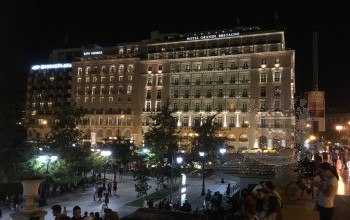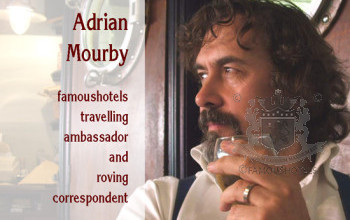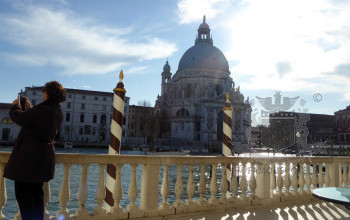MOURBY OF ATHENS
( words)
Adrian Mourby thinks that the Hotel Grande Bretagne has never looked so grand
On my first night back in Athens there was a protest march due in Syntagma Square. The liveried staff prepared by calmly removing the brass handrail in case a riot ensued. This is a hotel that has seen a lot of history and gives the impression of floating serenely above it all.
The current grandeur of the Grande Bretagne owes much to the current owners, the Laskaridis family and to Starwood, the management company, both of whom have devoted themselves to making sure that the hotel shines out as a beacon of Belle Epoque glamour. Step into the lobby today and you’d believe it has been very, very well maintained over the last 142 years. You would not guess that up until 2001 there was a very nasty mezzanine floor cutting the lobby ceiling down by half its current height to try and give a “modern” ambience. After an investment of something in excess of 100 million euros, the Grande Bretagne looks like the hotel that its founders had in mind back in 1873 -- but better.
The Hotel de la Grande-Bretagne sur La Place du Palais Royal started life in a mansion close by the palace of Otto, the first king of the the newly-independent Greece. The Dimitrou Mansion was built in 1842 by a businessman from Trieste. In 1873 a Mr Stavvas Kentros, who had already opened one Grande Bretagne hotel close to Royal Palace (now Syntagma) Square, moved his business into the Dimitrou Mansion and in 1879 he took on a partner, Stathis Lampsas.
Young Stathis had worked in Paris and had come back with some very ambitious ideas for a great new Athenian hotel. The two men shared a vision and it paid off. Athens was growing rapidly and was in urgent need of a respectable and distinguished place to stay. By 1885 the partners were able to buy the Dimitrou Mansion outright. Three years later, after Stavvas Kentros’s death, Lampsas bought his widow’s shares and as sole proprietor made the hotel central to Athenian life.
In 1891 he opened a luxury restaurant (at a time when it was a novelty for hotels outside Paris to aspire to culinary excellence). He also inaugurated dinner dances and offered the hotel as a headquarters for the International Olympic Committee, who were overseeing the first modern Olympic Games in Athens. Moreover Mr Lampsas continually expanded the footprint of the hotel with the assistance of six of Greece’s biggest banks. By the time he died in 1923 and his son-in-law took over, the Grande Bretagne was beginning to rival the splendour of its near neighbour, the royal palace.
During World War II the hotel’s air raid shelters made it an ideal base for King George II, the general staff of his army, and the British forces in Athens. When Greece fell to the Wehrmacht in 1941 they naturally took over the hotel as their headquarters, but in October 1944 it was once again the headquarters of the British after Greece’s liberation.
In 1957 the Dimitrou Mansion at the core of the old hotel was demolished and the current hotel facade created. So the building we see today has stood on this commanding spot since 1873 and yet it only really reached its current size and shape 84 years later. But the truly remarkable fact is that the regal edifice we enter nowadays with its marble floors, Corinthian columns and painted ceilings only came into being in 2003 (just in time for the 28th Olympiad). The Grande Bretagne is fortunate to have had very few owners and for those owners mostly to have shared a vision of Belle Epoque grandeur in Athens. And today the grand dame on Syntagma Square has never looked better – or more splendidly nineteenth century.
As for the staff, they have that calm assurance of an ancient institution. The Grand Bretagne has seen revolutions, wars, occupations, the dictatorship of the colonels, the frequent deposition of its monarchs, the economic crisis of 2008, and the first buds of recovery. A small protest in Syntagma Square wasn’t going to peturb anyone. As soon as the marchers passed (quietly) by, the liveried staff discreetly replaced the brass handrail and carried on as serenely ever.
In case you wish to reach our famoushotels' roving ambassador, do not hesitate to contact him directly: adrian@adrianmourby.com
Adrian Mourby's website












